THE SEMMERING CONTEST
The Semmering railway was constructed between 1848 and 1854 in Austria; it was the first mountain railway built to standard gauge in Europe. On a track length of only 41 km the track rises 460 m; for 60% of the length the gradient is 2 - 2.5%, (equivalent to 1 in 40) and 16% of its length had a curve radius of only 190 m. The Semmering Competition was held to select a locomotive design to run this difficult line. While not as famous or influential as the Rainhill Trials of 1829, the Semmering Contest had an important influence on the design of articulated locomotives, giving rise to Fairlie, Mallet, and Meyer types.
Candidate locomotives had to draw trains of 140 tons up a gradient of 2.2‰ at a speed of 11.5 km/h. The boiler pressure was to be no more than 8.5 kgs/sqcm (121 psi) and the axle load was to be maximum of 14 metric tons.
There were four locomotives entered for the contest; Bavaria, Seraing, Neustadt, and Vindobona. It was held from 20th August to 16th September in 1851. (before the completion of the railway) All four fulfilled the conditions of the trial, unlike the results at Rainhill, but failed in service afterwards. All four were certainly 'unusual' locomotives. Practical photography was only just getting going at the time, and sadly there are no photos of these locomotives.

BAVARIA
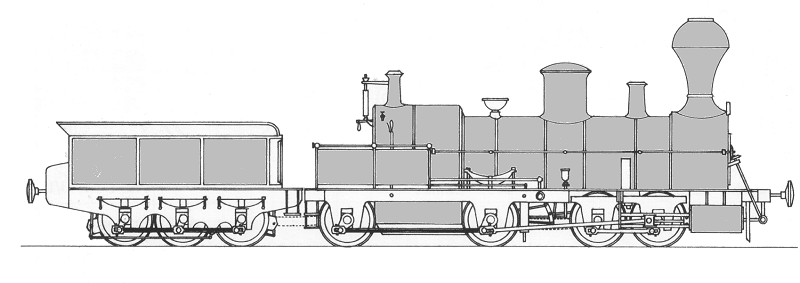 |
| Left: Bavaria: 1851
The Bavaria is stated in Wiener to have had three bogies, but this does not fit with the drawing, which appears to show the middle two coupled axles attached to the frame; the front axle is driven by cylinders that must also be attached to the frame. The forward bogie had two axles and was driven by a chain in the vertical plane from the front of the two middle axles; the axles on the front bogie were coupled by a connecting rod in the usual way. The rear 'bogie' consisted the tender, with three coupled axles. The front axle of the three was driven by chain in the vertical plane from the rear of the middle two axles.
|
The Bavaria took first place in the contest; it was bought by the state for 20,000 ducats, (Wikipedia) or 24,000 francs. (Wiener) However further testing between 12th January and 28th April 1852 showed that the drive chains would only last for a few days. Bavaria was eventually scrapped, but its powerful boiler generated steam in the Graz operations workshop of the Southern State Railroad until the mid-1860s
So far no explanation has been found for how the chains were supposed to accomodate themselves to the swivelling of the front bogie and the tender. Presumably they were slack when the bogies were in line, and had sprocket-wheels designed to cope with some angular error. These chains were clearly the weak point of the Bavaria and otherwise it seems a sound design. Chains have never been popular for locomotive drive; one exception to this is the Sentinel locomotive range.
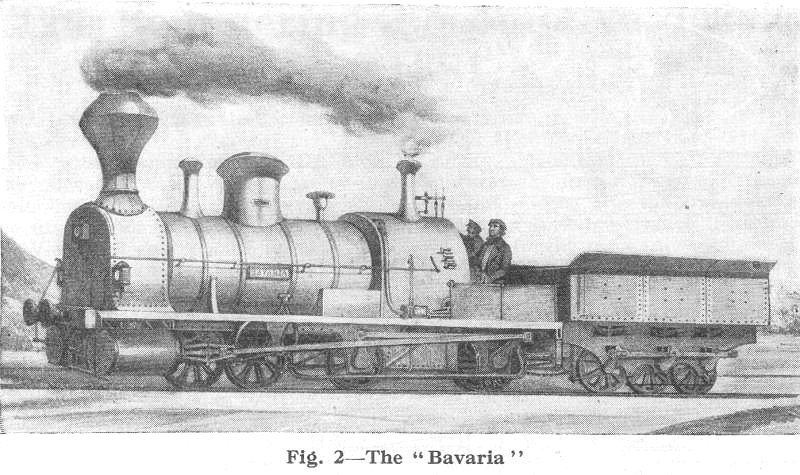 |
| Left: Bavaria: 1851
This pencil sketch of Bavaria shows the connecting rod driving the rearmost of the axles under the firebox, unlike the drawing above. Note the three test-cocks (for checking water level) on the side of the boiler.
Source: unknown
|
Bavaria was built by Maffei.
The Bavaria has a Wikipedia page. (in German)

SERAING
 |
| Left: The Seraing locomotive: 1851
The Seraing had two four-wheel bogies, each driven by two cylinders inside the frames. The apparently extraordinary decision to have two separate boilers, complete with two fireboxes, two smoke boxes and two funnels allowed the adhesion weight to be divided equally between the two bogies. It must however have made twice as much work for the crew, and needed twice as much maintenance. None the less, this was the beginning of the Fairlie double-boilered locomotives.
Coal was carried on a small two-axle tender, but how it reached the footplate is unclear. Possibly it had to be carried along the outside of the locomotive at considerable risk.
Seraing was built by the Société anonyme John Cockerill of Belgium, whose factory was in the town of Seraing in Belgium.
The Seraing has a Wikipedia page. (in German)
|
The Seraing only came third in the competition, but having met the conditions, was bought by the state for 9,000 ducats. The problems that led to its withdrawal were shortage of steam (despite having two boilers) and leakage from the flexible steam pipes.
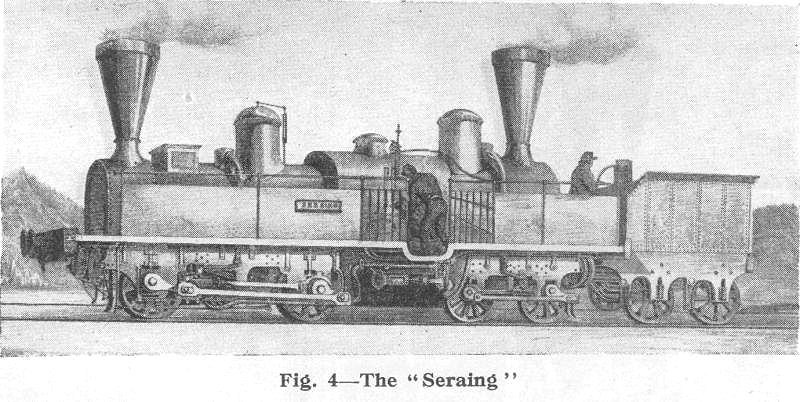 |
| Left: The Seraing locomotive: 1851
This drawing appears to show the valvegear eccentric outside the frames on the second axle from the left. It also shows one of the train crew feeding the firebox (centre) while his mate is working in the tender; it does appear that coal was brought forward along the side of the boiler, with the personnel protected from falling off by a metal plate. The rectangular structure to the left was presumably a water tank.
Source: unknown
|

NEUSTADT
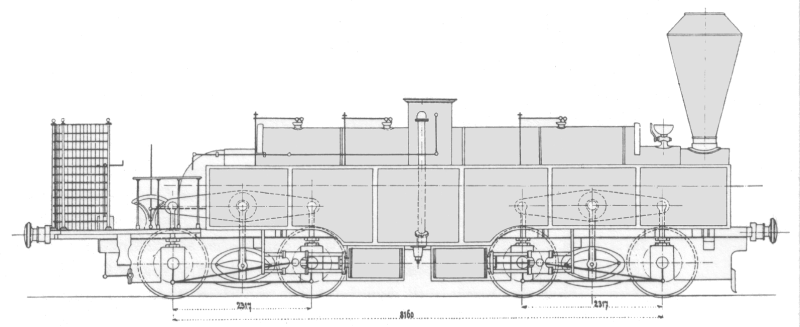 |
| Left: The Wiener-Neustadt locomotive: 1851
The Wiener-Neustadt had two four-wheel bogies, driven by outside cylinders. Power transmission between the axles was by conventional coupling rods. Each bogie was sprung with one set of springs attached to a large beam that equalised the load between the axles; it looks like rather heavy and clumsy way of doing it, but all the weight of it was available for adhesion. Two steam pipes ran down to a set of four telescoping pipes with stuffing-boxes that led steam to the four cylinders. The exhaust steam was routed, via more telescopic piping, to a central pipe that ran forward to the blastpipe in the smokebox. Boiler pressure was 111 psi. Water was carried in side-tanks.
The front bogie had a central pivot, and the rear bogie moved in a radial manner that is not at present clear. According to Wiener the great defect of the locomotive was that the bogies could not move transversely with the respect to the main frame of the locomotive. Presumably this gave trouble with derailments and damaged track, but Wiener gives no details.
Apart from that, and the odd suspension, it looks like a quite practical design, with all of its weight available for adhesion. It appears to have taken second place in the competition.
|
The Wiener-Neustadt is considered to be the forerunner of the du Bousquet locomotives.
The Wiener-Neustadt was built by the Wiener Neustädter Lokomotivfabrik, a German company.
The Neustadt does not appear to have a Wikipedia page. In fact, very little information at all is available; the best source is Wiener, pages 232-233.
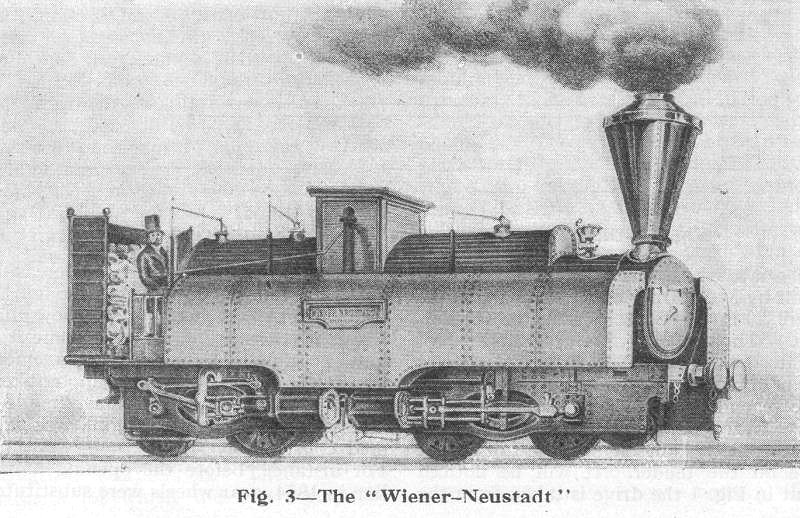 |
| Left: The Wiener-Neustadt locomotive: 1851
The enormous wooden box containing the steam dome looks as if it would somewhat impair forward vision.
Source: unknown
|

VINDOBONA
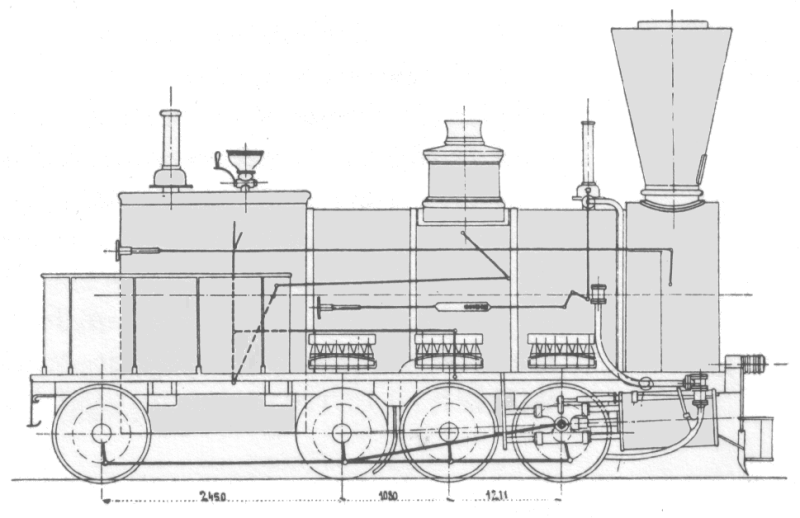 |
| Left: The Vindobona locomotive as at the Contest: 1851
The Vindobona is the least-known and was the least successful of the four locomotives; it was the only one that was not articulated, but despite that it met all the contest requirements. It was however described as 'weak' and was only awarded fourth place. Therefore it was bought by the state for only 8,000 ducats. Vindobona was designed by the Scotsman John Haswell who was in charge of new construction for the Vienna-Raaber Bahn.
The Vindobona was designed as a 6-wheel locomotive, but after it had been built it was found that the load on the first axle exceeded the maximum of 14 metric tons allowed for the contest, so another axle and pair of wheels was added in between the original first and second axles.
The Vindobona was built by the locomotive factory of the Vienna-Raaber Bahn in Vienna, Austria. The name comes from Vindobona, a Roman military camp on the site of Vienna.
The Vindobona has a Wikipedia page.
|
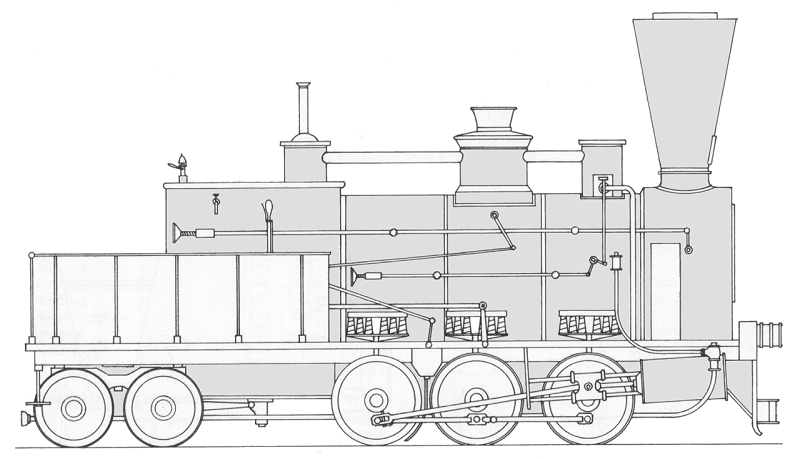 |
| Left: The Vindobona locomotive after modification: 1851
After the Semmering contest the Vindobona was modified again, the rear axle being replaced with a swivelling two-axle bogie. This however did not make it any more suitable for operation on the Semmering line.
|
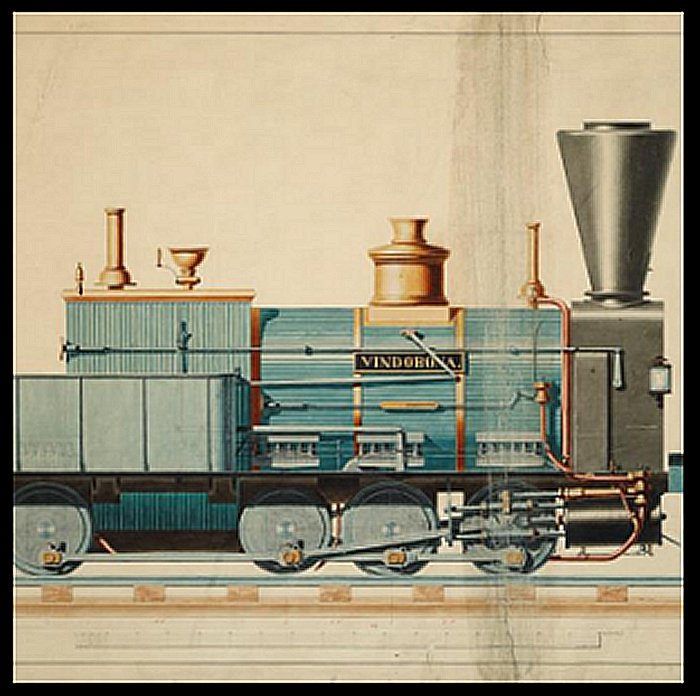 |
| Left: The Vindobona locomotive before modification: 1851
This is a coloured drawing held at the Vienna Technical Museum.
|
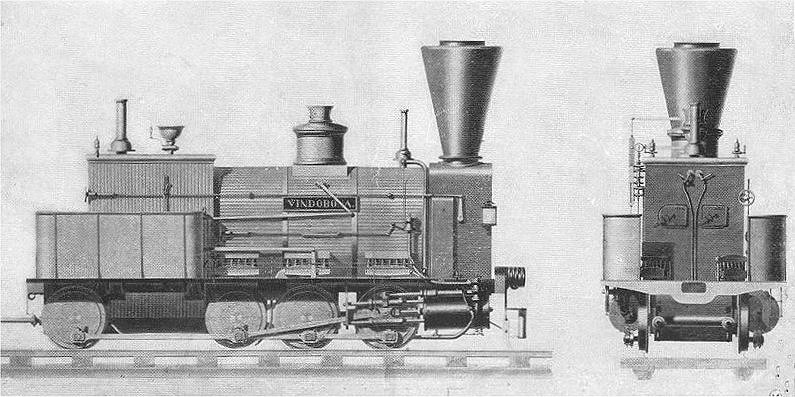 |
| Left: The Vindobona locomotive before modification: 1851
The side elevation appears to be identical to the coloured drawing above.
Source: unknown
|
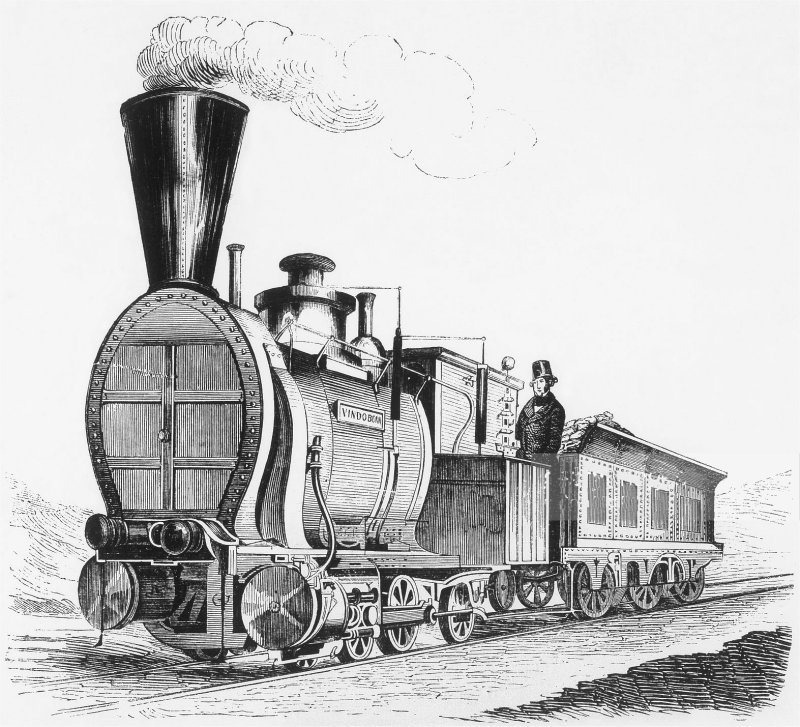 |
| Left: The Vindobona locomotive before modification: 1851
It is difficult to describe Vindobona as a beautiful locomotive.
Source: unknown
|

After the unsatisfactory performance of the four entrants, the Semmering railway was actually worked by Engerth locomotives, designed by Wilhelm Freiherr von Engerth.

BIBLIOGRAPHY:
"Articulated Locomotives" by Lionel Wiener, published in English translation by Constable & Co in 1930. The classic work on the subject.
























